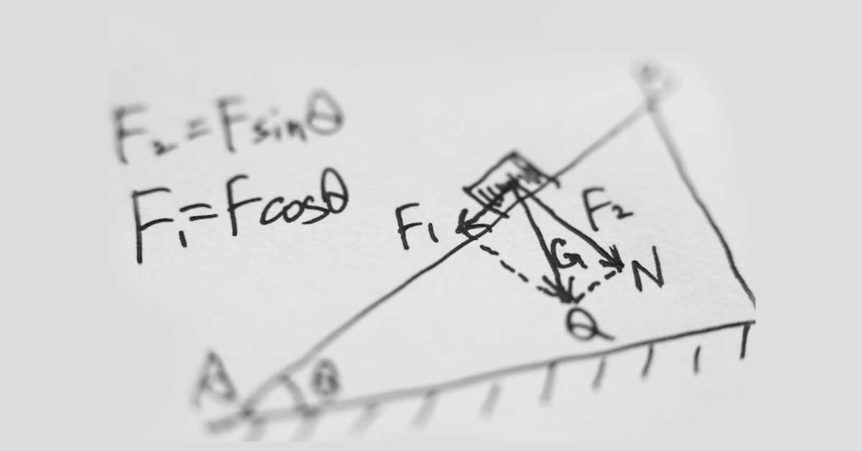In this short article, I want to outline how homeschooling parents can manage the task of grading assignments and assessments for upper-grade courses. By way of framing this conversation, I should mention that Centripetal Press texts use two types of questions: computations and verbal questions. Computations are solved mathematically, and we always provide the correct answers in the text. Verbal questions must be completed by writing responses in complete sentences. How to assess student responses to these verbal questions is our topic here.
 To begin, providing sample answers for upper-level courses in physics and chemistry is not really a practical way to address the need home school families have expressed. The reason parents need the answers in the first place is that either they don’t know the answers, or they don’t have time to read the book, or they don’t feel qualified to judge the quality of an answer without something to compare it to (or perhaps a combination of all these).
To begin, providing sample answers for upper-level courses in physics and chemistry is not really a practical way to address the need home school families have expressed. The reason parents need the answers in the first place is that either they don’t know the answers, or they don’t have time to read the book, or they don’t feel qualified to judge the quality of an answer without something to compare it to (or perhaps a combination of all these).
With lower-level courses in middle school or early high school, the answers to verbal questions are relatively straightforward. A few of the answers can get a little complex, but these represent a small percentage of the questions students encounter in the course. In these courses, Centripetal Press provides sample answers to address the parent’s need and parents can check their child’s work fairly easily by comparing the child’s response to our sample answer.
However, in the upper-level courses, the answers to verbal questions are often rather conceptually and technically complex, and parents may have little knowledge of the subject. In these courses, it is not feasible to check a student’s response by comparing the response to a written sample. There are several reasons for this.
It is common for students to write an answer that looks reasonable but which is in fact poorly written or technically incorrect.
First, it is quite common for students to write an answer that looks reasonable and correct but which is in fact poorly written or technically incorrect. These deficiencies may not be at all apparent to an unknowledgeable person attempting to assess the work.
Second, a student’s answer can be technically correct but worded entirely differently from the language that might be used in an example. I have encountered many occasions when students formulated excellent answers to sophisticated questions but did so using concepts and vocabulary that I would not have used. This is always very impressive to see, but you can see that it is not possible to anticipate this by providing canned answers to which you can compare the student’s work. In such cases, only a person who fully understands the topic at issue can assess the student’s response.
Third, it can even happen (and does) that a student has no idea how to answer the question but remembers a few buzzwords from the chapter which he or she compiles into sentences. (I whimsically call these “shotgun answers”: the student doesn’t know the answer to the question, but packs his “shotgun” with buzzwords and “blows” them onto the page, hoping to get some credit.) I have seen cases of this when even teachers who know the subject have been tricked into thinking that the student knows what he or she is talking about.
So if parents can’t check their child’s verbal answers on an exam by comparison to an example answer, what are they to do?
This problem is inherent in homeschooling upper-level students; it sort of comes with the territory. The answer is not to use fill-in-the-blank or multiple choice questions. Such questions can be checked somewhat objectively but typically don’t do much to require conceptual thinking. To engage the student in higher-level critical or conceptual thinking, students necessarily must respond with a few sentences of explanation.
The process for grading chapter exercises is different from exam responses.
Chapter Exercises
For chapter exercises, parents can have the student write the response and then turn to the page in the text where the topic is addressed. The student can then support his or her response by citing relevant passages in the text, that is, by writing down the page and paragraph (or section and paragraph) where the answer is found. For a complex question, the answer may not be found written verbatim in the text; it may instead require combining ideas from several different paragraphs. The student should be required to support his or her answer by citing these locations in the text.
When assessing this written work, the parent grader simply checks to see that the work is supported by appropriate citations. It is the student’s responsibility to ensure that the citations are legitimate and that he or she actually understands the question and can formulate an appropriate response to it.
Exam Responses
For exam responses, the student first completes the exam and turns in the paper. The parent/grader then checks to see that the test is complete. The student then uses the text to find the relevant passages the text and adds the citations to the test paper using, say, a colored pen to distinguish these additions from the original responses on the paper.
As a final step, the student and grader review the responses and citations together. This final step is necessarily suboptimal. The best results will occur if the student is diligent and honest and can form an honest judgment of how well he or she has answered the question. Otherwise, the parent grader will need to listen to the student explain his or her response, read the material from the chapter, and demonstrate that the response is adequate.
To engage the student in higher-level critical or conceptual thinking, students necessarily must respond with a few sentences of explanation.
Note that the parent grader is still in the position of trying to judge a response to a question he or she may not know anything about. There is no way around this dilemma. But the value here is that instead of the parent trying to judge the answer by comparing it to a written example, the student is the one who provides reasoned argument based on sources. The parent is now in the position of assessing whether the student knows what he or she is talking about. This explanation method is far easier to do than trying to judge a response absent of any such explanation or justification.
We are surrounded by analogous situations. What is easier—to read a written instructional manual on how to operate your smartphone, or to have someone explain it to you? Or what if you want to understand a local bond issue to be voted on in your city? Reading about it without verbal interaction can be challenging. You might understand neither the issue nor how your priorities would incline you to vote. But a supporter or opponent of the bond issue can quickly explain her position, pointing to the language in a written text to justify her statements.
On any technically complex issue, you might have to ask a few questions to clarify points or press the person on aspects to the issue she hasn’t addressed, but we would probably all agree that in most cases we would be able to tell after a few minutes whether the representative was well-informed and trustworthy.
Homeschooling advanced topics without an outside tutor is going to be difficult. Better is the situation where the student can be part of a coop or online school with a knowledgeable instructor. This method may be work for your situation. But I hope your student will soon become self-directed enough that, with the help of textbook and online resources, she may be able to do it on her own.

